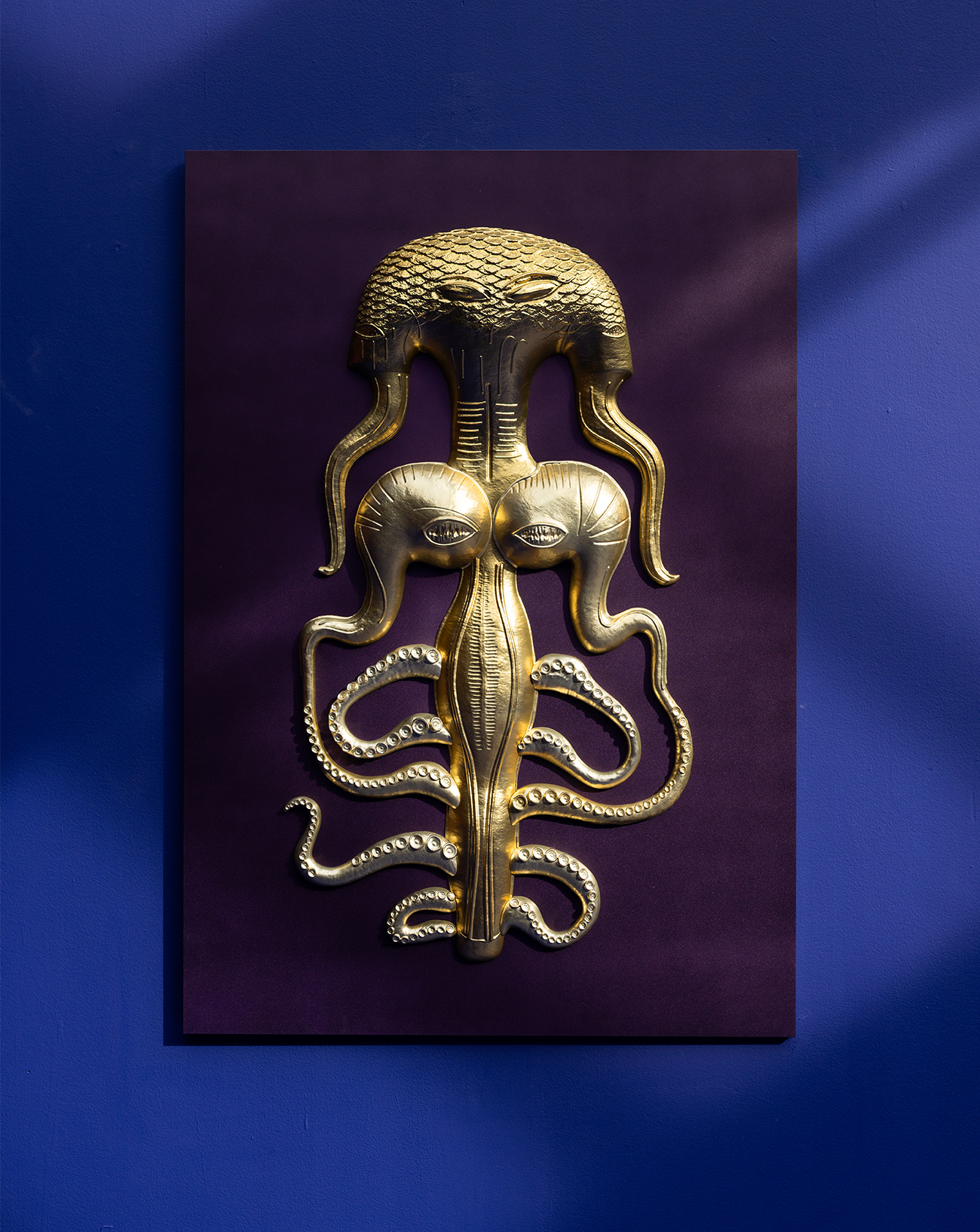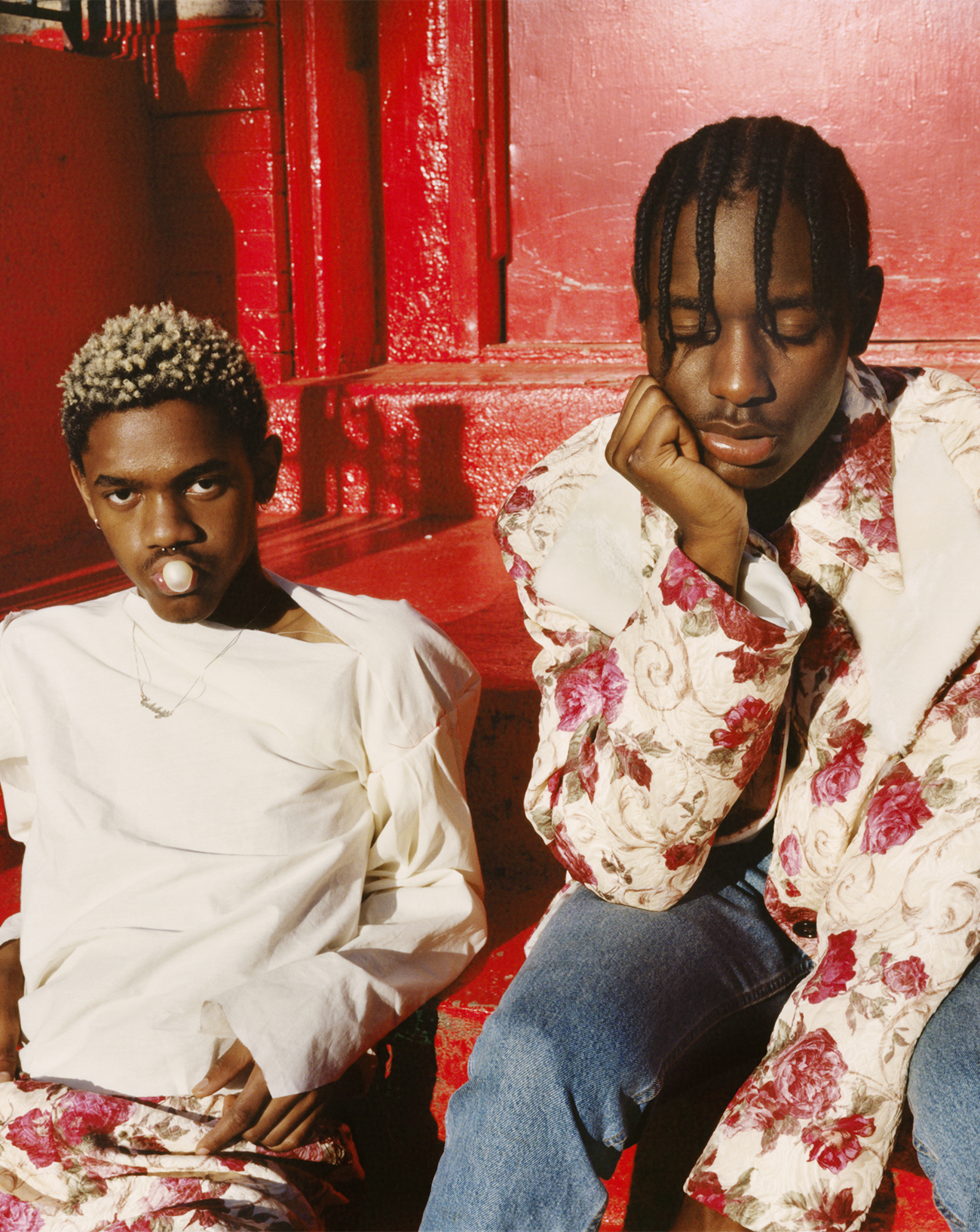
16

16
Meet Urs Fischer, the artist who’s unleashing a giant wave on Place Vendôme
As part of Art Basel’s public program for the Paris+ fair, the Place Vendôme is set to host a new, never-before-seen project: an immense aluminum wave sculpted by artist Urs Fischer. From his home in Los Angeles, the Swiss artist looks back on this landmark project.
Published on 16 October 2023. Updated on 20 June 2024.
In collaboration with Paris+ par Art Basel.
On a recent August morning in Los Angeles, I stumbled upon a stone-frozen snowman, as Urs Fischer, whose monumental sculpture Wave (2018) will be presented at Place Vendôme during Paris+ par Art Basel, led me into his sprawling domicile with an offering of coffee and a tour of the gardens. His steep garden is thick with cacti, along with huge marble statues of gape-mouthed witches, contented Buddhas, plaintive cats, money frogs, foo dogs, and stone-frozen snowmen. The statues are part of Swiss artist Peter Regli’s ‘Reality Hacking’ series, which invaded the hillside when Fischer invited Regli, a longtime friend, to take over the space.
Fischer’s Los Angeles home is not unlike a Fischer sculpture; the steep bank whose gardens and domestic spaces he has been rearranging, bricolage style, for over 20 years, is like a giant pile of mud with various toys and objects pressed fondly into it with a godlike hand.
From clay to wax, Urs Fischer’s love of materials
Born in 1973, Fischer initially studied photography at the Schule für Gestaltung in Zurich, and spent time in London, Berlin, and New York before settling in LA. His practice has since sprawled out into sculpture, image, and installation, sprung from a unique realm were craft and Surrealism meet. His early wax sculpture series meticulously replicated everyday objects, like chairs and teddy bears, each bearing a delicate wick spine. Once lit, the figures slowly melted and morphed throughout their exhibition, hovering between sculpture and very, very, slow performance.
His installation at the 2011 Venice Biennale was a faithful yet scaled-up wax replica of Giambologna’s 16th-century sculpture Abduction of a Sabine Woman that also melted into a dripping state; the powerful Roman figure and his victims coming together as a single, mottled pile of wax. Scale is a recurring fascination for Fischer. His ‘Big Clays’ series is perhaps his most spectacular unity of references, not just to scale and craft, but the implied divinity of scale, the hushed reverence of craft.
Despite their monumental size, Fischer’s ‘Big Clays’ always begin in the palm of his hand. Gripping a small portion or two of clay, he plays and squeezes and sort of improvises a form, sometimes with his eyes closed. The artist might make hundreds of these abstract bibelots before anointing one to be produced. It’s not unlike how an expressionist painter may create many ‘drafts’ of a painting before landing on one that captures the gesture of each stroke as they see fit.
Wave: a five-metre-high aluminium sculpture
The process ‘is fast,’ Fischer tells me, all the while coordinating with fabricators and approving installation renderings of Wave, a 5-meter-high aluminum sculpture. The second work to be produced in the ‘Big Clays’ series, it is set to be installed at the Place Vendôme in October as part of Paris + par Art Basel.
He adds: ‘If you go past a certain point, it looks labored. This recently came to my mind: the works you make are not the good ones. The works that make themselves, just work. It’s funny. It’s almost more like dance. There is a thing that happens that feels right.’
The 10 existing ‘Big Clays’ have been exhibited as public centerpieces around the world, including Florence, New York City, and Moscow. In 2022, The Lovers #2 (2018–2022) was installed at Museo Jumex in Mexico City. Along with L’Arc (2016–19), which is permanently installed in Paris at Station F, the world’s largest startup campus, Wave is distinct from other ‘Big Clays’ in that it is finished with a unique milling process.
A monumental work of art with many details
‘It’s simple, it’s a carving,’ Fischer says as we page through photograph after photograph of details and updates from the fabrication studio. Part of the appeal of the ‘Big Clays’ series is how the minute details of the artist’s hand, the hairline crevices and wrinkles, become cavernous and nearly abstract in their final, monumental state. Fischer is visibly animated when talking about the nuances that emerge from the milling process. For all the provisional quirks of the clay in its beginning stages, scaling them up makes every detail feel fated. The significance of the choices become scaled-up too. ‘But it’s okay. I don’t like it when sculptures get boring up close.’
The sometimes-fraught act of looking is a foundational concern for Fischer. This is particularly evident in the dizzying 360 cm³ digital cube sculpture Denominator (2020-2022), on view until November 4 at Gagosian Beverly Hills. The cascading sequence of decades of commercials that make up Denominator veer close to overwhelming. It’s like the idea of ‘cosmic latte,’ I tell him. If we look at anything too closely it blends too much, and everything becomes beige. Fischer nods, summing up the art of looking with a metaphor for the process of the ‘Big Clays’ series, and perhaps art-making writ large: ‘You gotta stop before it all works in on itself.’
Urs Fischer will present Wave (2018) on Place Vendôme in Paris with Gagosian (New York, Los Angeles, London, Paris, Geneva, Basel, Rome, Athens, Hong Kong, Gstaad), as part of the public program of Paris+ par Art Basel 2023. The artwork will be on view from October 18 to December 1, 2023.
Christina Catherine Martinez is a writer, actress, and comedian in Los Angeles. She is a recipient of The Andy Warhol Foundation Arts Writers Grant and author of the essay collection Aesthetical Relations (Hesse Press, 2019).














